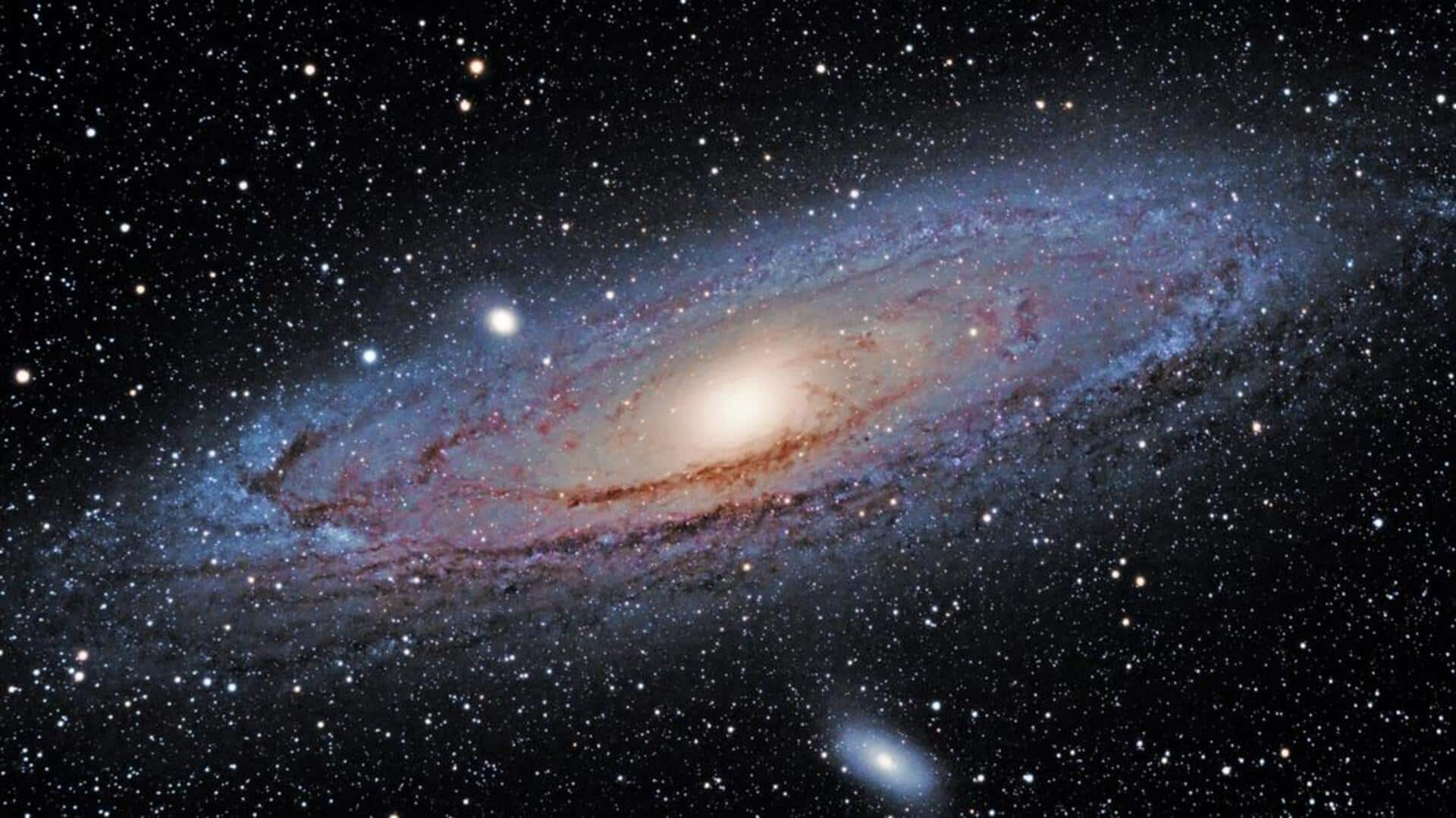
Scientists may finally know how giant galaxies formed in universe
What's the story
A team of astronomers from the University of Southampton is on the verge of cracking the mystery of how elliptical galaxies came into being. Unlike our Milky Way's flat disk shape, these celestial bodies look like inflated footballs. The study indicates that cosmic collisions some 12 billion years ago may have created these massive galaxies.
Theory
Cosmic collisions and star formation
Dr. Annagrazia Puglisi, a member of the research team, has shared the findings in the journal Nature. She explains that when two disk galaxies collided, gas was drawn toward their center, leading to the creation of trillions of new stars. These cosmic collisions occurred between eight and 12 billion years ago during a highly active phase in the universe's evolution. "Our findings take us closer to solving a long-standing mystery in astronomy," she added.
Joint effort
Research collaboration with Chinese institutions
The research team worked with China's Purple Mountain Observatory and the Chinese Academy of Science. They examined more than 100 star-forming galaxies in the distant universe with the help of Alma, the world's largest radio telescope in Chile's Atacama desert. The study lead, Dr. Qing-Hua Tan from the Purple Mountain Observatory, emphasized a new technique that looked at light distribution from distant and highly luminous galaxies.
Information
Star formation in elliptical galaxies
Dr. Tan revealed that these elliptical galaxies form rapidly as gas is drawn inward to fuel black holes, triggering star bursts at rates 10 to 100 times faster than our Milky Way. This process has been a topic of interest among astrophysicists for decades.
Upcoming studies
Future research to map stellar components of galaxies
The team intends to combine their findings with data from telescopes on the James Webb and Euclid satellites and the Chinese Space Station. This will allow them to map the stellar components of galaxies. Dr. Puglisi was optimistic that this approach will yield a more holistic picture of early galaxy formation and deepen our understanding of how the universe has evolved over time.